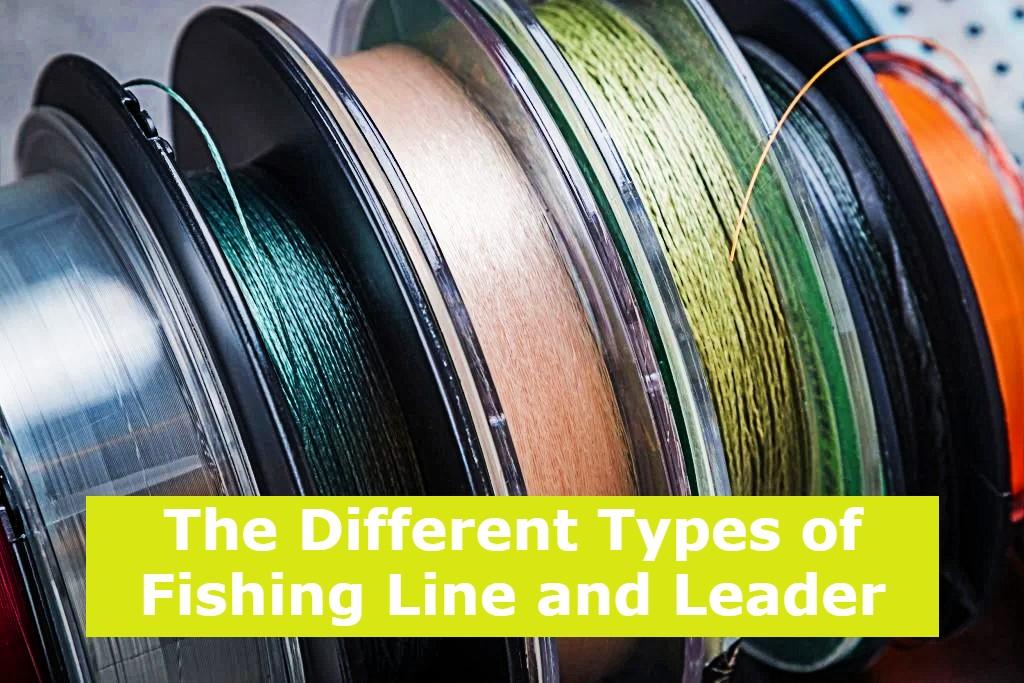The fishing line and leader used in fishing is a flexible high tensile cord used to tether a fish to a reel. It is generally pulled by a reel but may also be hand-retrieved. This cord is usually attached to at least one hook and it is then used in conjunction with a bait.
Monofilament
Monofilament fishing line is a type of line used by fishermen for a wide variety of purposes. It is relatively cheap, lightweight, and easy to handle. In fact, it is often the first choice of many anglers.
The line is usually manufactured from a nylon polymer. There are several different types of nylon polymers and each produces a different set of properties. Each will have its own advantages and disadvantages. Choosing the right kind of fishing line depends on personal preference, but most anglers prefer monofilament.
Some of the major advantages of using monofilament include its ability to cast farther when it is wet. While it is not as durable as fluorocarbon, it can handle bigger hits and can be cheaper.
A monofilament leader will also be less visible to fish than braided line. In addition, the material is less porous. This means it is less likely to absorb sunlight and water.
While a fluorocarbon leader is more expensive than monofilament, it is also a better choice for clear water. Fluorocarbon leaders are almost invisible underwater, making them ideal for jigging or bass fishing.
Fluorocarbon
If you want a better quality line that lasts longer and withstands the wear and tear of the fishing season, then you may want to consider fluorocarbon. This type of line is very durable and is more flexible than monofilament. It also has a higher density and is capable of stretching and retracting without losing its shape.
Abrasion resistance is another great advantage of fluorocarbon. When a fish bites on a worm or shad, it tends to break the line, but it is not able to rip or pull it apart. Fluoro is more abrasion resistant than other types of lines.
Some anglers opt to use braided or monofilament fishing line. Braided fishing line is cheaper in the long run and has better durability on the spool. However, mono is softer and stretches more quickly than fluoro. You can buy mono in lengths of 100 yards or more.
In addition, fluorocarbon can be used as a leader material. Most anglers prefer a thin, low stretch line for casting.
Swivel
Using a swivel for fishing line and leader can increase the efficiency of your fishing experience. However, there are a few things to consider before buying one. These include the type of swivel, its weight, and the swivel’s strength.
The swivel is a small piece of metal that is attached to your fishing line and leader. This can help you prevent unwanted tangles. It can also make it easier to switch lures.
While a swivel may not be required for most situations, it is important to know how to attach them correctly. Failure to do so can make it harder to catch fish. Fish can easily twist your line, which can weaken the line and cause it to break.
When choosing a swivel for fishing, choose one that is strong and will be able to handle the weight of the fish you are targeting. Typically, swivels rated between a #1 and a 2/0 are safe to use.
Braid
Braid is one of the most common lines used on spinning reels. It has a narrow diameter that cuts through water more easily. This makes it perfect for pitching lures through thick cover. However, its thinness also makes it vulnerable to abrasion.
Many tournament pros use braid. It is a good line for fighting big fish out of heavy cover. It is also good for shallow water trolling. But, it can break more easily than other lines.
If you plan on fishing in crystal clear waters, you should consider a mono or fluoro leader. These types of lines are less visible in the water, but they do not have the same sensitivity as braid.
When you spool a braid, make sure you leave about an eighth of an inch between the line and the spool. Also, avoid crossing the line. You should always keep a high tension when using a braid. Breaking a braid can damage your gear and hurt you.



